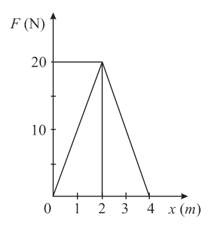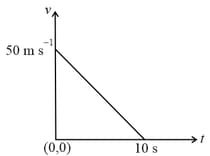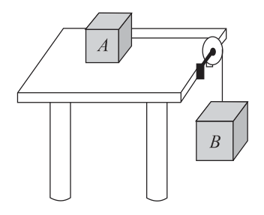The total work done on a particle is equal to the change in its kinetic energy :-
Important Questions on Laws of Motion
The only force acting on a body that is moving in -plane has a magnitude of . The body initially has a velocity of in the positive -direction. Some time later, the body has a velocity of in the positive -direction. The work done on the body by the force during this time is
The graph between resistive force acting on a body and the distance covered by the body is shown in the figure. If the mass and initial velocity of the body are and respectively, find its kinetic energy after having travelled a distance of


In the arrangement shown in the figure, and Assume that the string is light and inextensible and the pulley is smooth. If the coefficient of friction between block and the table is the speed of both the blocks when has descended through a height is nearly take


